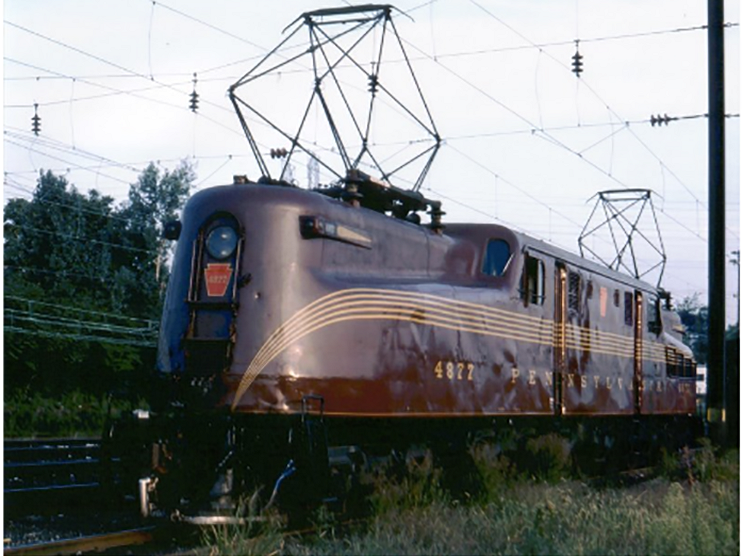The Pantograph Barrier: Part 1 of 4 Of Pantographs & Wires

The marriage of the pantograph and the catenary has been wonderfully stable and productive for 120 years, but the insurgence of high-speed trains has started to reveal a “Pantograph Barrier”. This four-part series will examine the technical issues that have caused this 120-year-old technology’s inherent limitations and how advances can lead to the operation and initiation of new, truly high-speed intercity services. Part one will begin with the history of overhead electrification technology and where the technology is today.
The first electric locomotives were put into service by the Baltimore & Ohio Railroad (B&O) in 1895 to pull trains through a tunnel under the Baltimore River, where steam engines could not venture. The B&O created the then-novel features of an electric contact wire on the tunnel ceiling and a current collection device mounted on the locomotive cab. This setup allowed trains to travel through the tunnel at speeds above 30 MPH. It would take another quarter century for the industry to see electric locomotive as an economical alternative to coal-fired locomotives. The New Haven and the Pennsylvania railroads began to install overhead electric wires and build new electric locomotives as traffic along what we now call the North East Corridor increased.
The P5a series of locomotives were the first series built by the Pennsylvania Railroad, and similar designs were then in turn built by the other railroads. This series sported diamond-shaped pantographs. Locomotive designs continued to evolve over the years as operating speeds and train weights increased. The GG1 Locomotive, also built by the Pennsylvania Railroad in the early 1940s, had a top speed of 100 MPH and was a workhorse on the rails for the next 30 years. The GG1, pictured right, is considered by many to be the pinnacle of the era of artistically designed locomotives.
Eventually, a normal operating speed of 80 MPH did not seem so impressive and the GG1s were retired in the late 70s when AMTRAK replaced them with a series of designs imported from Europe. These designs included the Z-shaped pantograph, which is the one that almost all trains in the United States use today. These new locomotives were able to pull more load and operate at over 120 MPH.
The catenary, or overhead wire, has remained essentially unchanged since its inception in the early 1900s. The wire, often called OCS (Overhead Contact System) started out as a quasi-round copper or bronze wire fixed in place over the tracks by a system of cables called a catenary. The catenary, which includes electric insulators, is supported by wayside poles, arches, or other structures. The OCS is designed to accommodate ambient temperature changes. The wire is held in place and level, but it’s not restrained from moving horizontally. The older catenary used three contact wires, but it was later reconfigured to follow the Pennsylvania Railroad convention of using one wire. Europe and Japan had to rebuild their railroads after WWII. They advanced catenary designs by placing the contact wire in a controlled horizontal tension. This design still accommodates thermally induced stretching and contraction, while allowing for higher operating speeds.
Click here to check out a video on Catenary & Pantograph: How does it work?
But catenary technology is exhibiting signs of its inherent limitations even though it has remained stable for so many years. A survey of high-speed trains the world over demonstrates that there is a Pantograph Barrier. This term was first coined by Mr. Bobillot.
In that paper, the authors conclude that we have exceeded 90% of the theoretical maximum speed of the legacy pantograph/ OCS configuration. Their conclusions are confirmed by looking at the maximum revenue operating speeds of the 10 fastest trains in Europe, Japan, and China. In general, their upper speed is about 220 MPH. This exercise is a remarkable testament to the existence of a Pantograph Barrier. This exercise is a remarkable testament to the existence of a Pantograph Barrier.
Part two of this series will look at the technical issues that have created the Pantograph Barrier.
If you are interested in learning more about this topic, attend Frank Smith’s presentation "Balanced Force Pantograph and OCS" at the Joint Rail Conference in Pittsburgh, PA on April 18 -20, 2018.
https://www.asme.org/events/joint-rail-conference
About the Contributor
Frank has over 45 years of diverse experience as a Professional Engineer and is registered in 17 states. His experience includes electric power generation and distribution, microwave communications, public safety radio, SCADA, fiber optic communications, and railroad communications. Currently, Frank is a Lead Consultant with MACRO, a division of Introba, in Chalfont, Pennsylvania. Over the last decade and a half, he has provided consulting and engineering services to SEPTA, AMTRAK, PANYNJ, Caltrain, NJ Transit, Delaware Port Authority, San Diego Transit, and many others. In addition, he has 4 patents relating to railroad technology.
Related News
-
Jul 12, 2024
Doing the Work in Regenerative Practice of working with Your Level of Energy
Insights & Perspectives -
Jul 11, 2024
Can We Keep Up with AI’s Rapid Growth?
Insights & Perspectives -
Jun 21, 2024
Engineering With Heart: Building Community Connections in Rwanda
Insights & Perspectives


